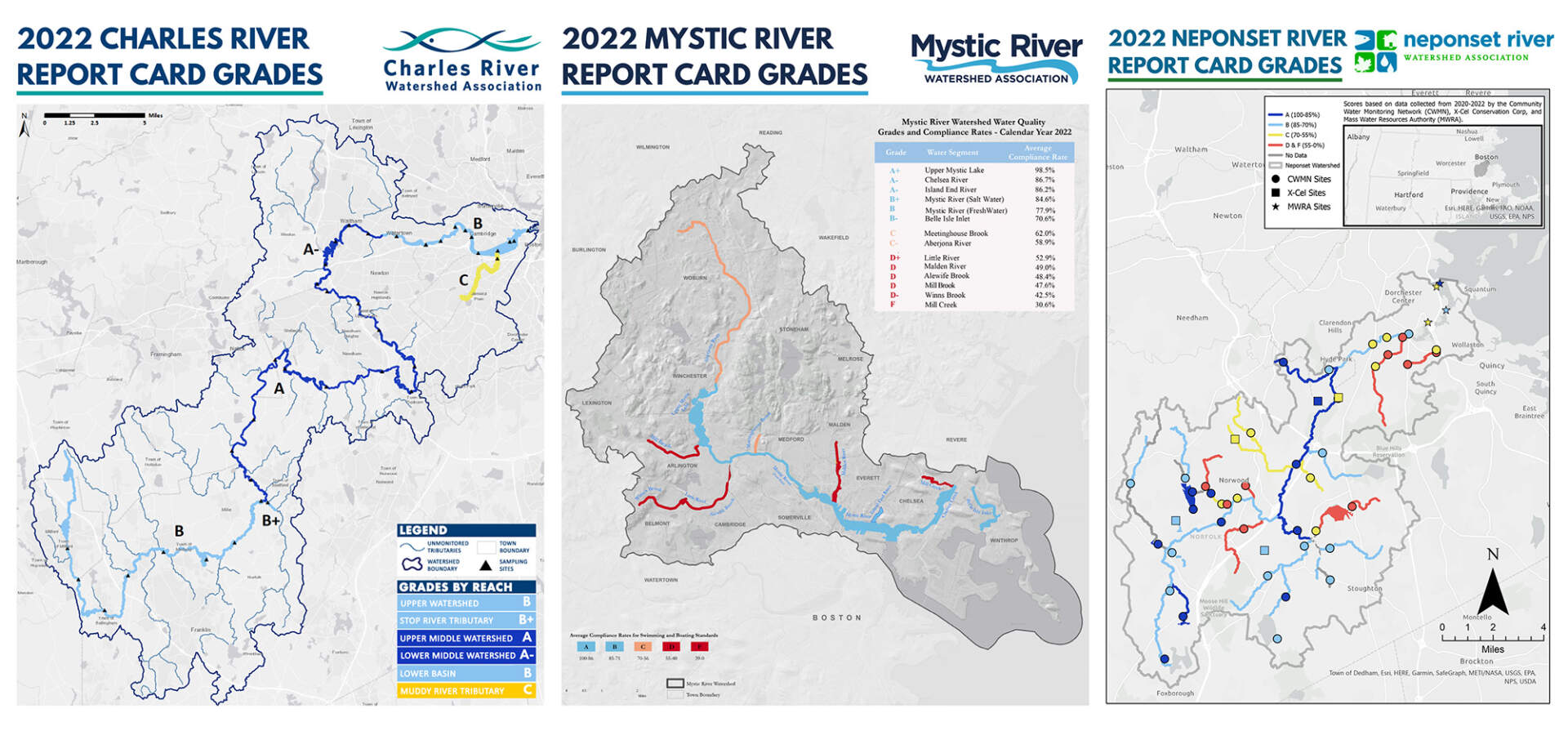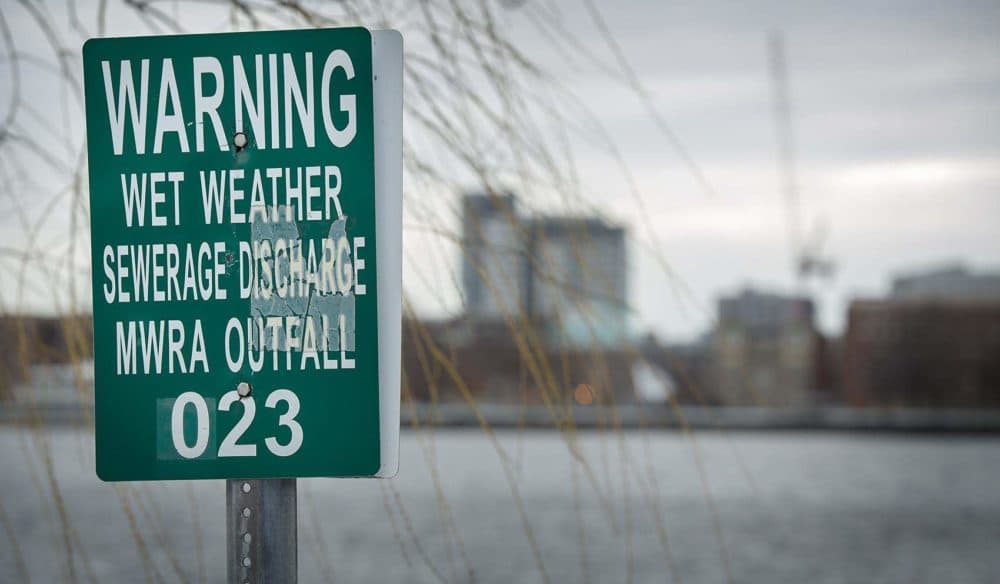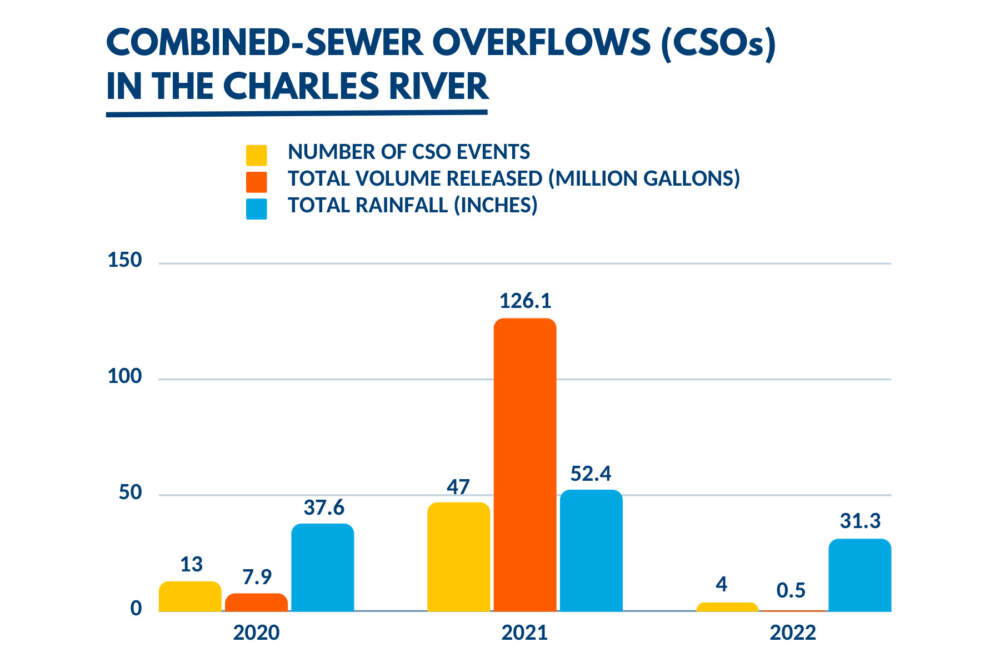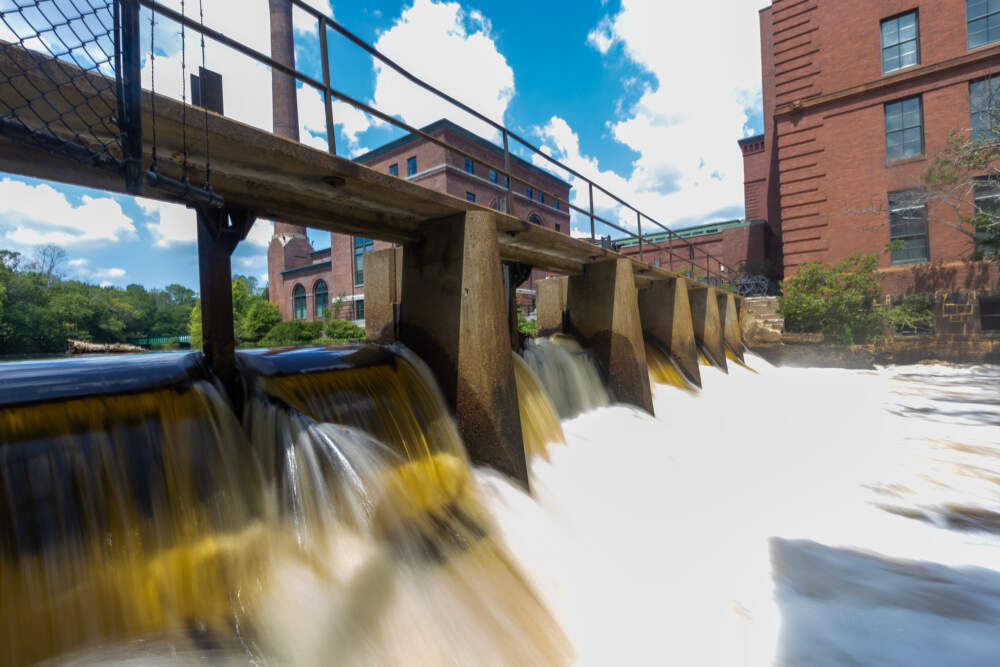Advertisement
Charles River cleanup improvements 'stalled,' says annual EPA report card

The Charles River is a lot cleaner than it used to be, but you still don't want to swim in most of it. Combined-sewer overflows, stormwater pollution and increased downpours and heat from climate change continue to trigger toxic algae blooms that prevent people and pets from fully enjoying the river.
That's one conclusion from the U.S. Environmental Protection Agency's annual "report card" for Boston’s three major rivers: the Charles, Mystic and Neponset. Every summer, the EPA issues letter grades to segments of the rivers and their tributaries, so the public can track improvements in water quality.
"People keep asking us, 'If Paris can make the Seine swimmable for the summer 2024 Olympics, why can't we swim in the Charles?' And frankly, it's a good question," said Emily Norton, executive director of the Charles River Watershed Association. She said improvements on the river had "stalled."
“While we’ve made such amazing progress since 1995, the work is not done until residents can experience the joy of swimming in cool, clean urban rivers on a hot day."

Like last year, most segments of the rivers got As and Bs, but all three rivers had problem areas. Here's the breakdown:
Charles River
"It's a vibrant, beautiful urban river. Just remarkable. And I know that 40 years ago, that was not the case," said EPA Region 1 Administrator David Cash. Cash recalled his brother-in-law getting so sick after falling into the Charles decades ago that he had to visit the hospital. The river is cleaner now, said Cash, but "there's still so much work to be done."
Sections of the Charles flanked by urbanized, paved areas consistently see lower grades due to stormwater runoff, which carries lawn fertilizer, road salt, dog feces, gasoline and other pollutants into the waterways. The worst grade in this watershed — a C — went to the Muddy River, a Charles River tributary that's in the middle of a years-long restoration.

In 2022, severe drought caused several sections of the Charles River to run nearly dry, with water levels under half a foot in Bellingham, Medfield, Needham, Newton and Waltham. The drought caused grades to decrease slightly in 2022 in some areas because pollutants became more concentrated — the upper watershed fell from a B+ in 2021 to a B, for instance.
On the upside, greener, more forested stretches of the Charles are swimmable on most days. And this is the third year in a row without a huge midsummer algae bloom on the Charles, said Max Rome, Stormwater Program Manager at the Charles River Watershed Association. It’s unclear if that’s due to less heat, better stormwater collection, or some other factor.
Another positive note: pollution from combined sewer overflows (CSOs) was down from a record high in 2021, when more than 126 million gallons of sewage and stormwater was released into the Charles. In 2022, only a half-million gallons were released.
Advertisement
Still, Conservation Corps member Lawrence Brown, who attended the report card’s release holding a giant cardboard poop, said any sewage in the river is too much.
"Water in general is really important," said Brown, adding that he hopes that all of the Charles River is swimmable someday.

Mystic River
The main Mystic River has generally good water quality and Upper Mystic Lake continues to have "high swimmability." But a number of tributaries — including Alewife Brook and the Malden River — got poor grades due to sewage contamination. Mill Creek in Chelsea got an "F."
“In wet summers like the one we are currently experiencing, and most dramatically in 2021 when 14 inches of rain fell in July, CSO releases are a commonplace occurrence — routinely exposing river users to bacteria, trash and more," said Patrick Herron, executive director at Mystic River Watershed Association. Herron called for more investment in underserved communities and for ultimately removing the CSOs.
“We understand that the elimination of remaining CSOs will be expensive — but we believe investment in public health and safety for all communities is worth it, given these discharges inhibit residents from fully enjoying vital green spaces and riverways.”
Bonnie Heiple, Commissioner of the Massachusetts Department of Environmental Protection, noted that the the Healy administration recently awarded $600,000 to 10 regional and municipal wastewater utilities across Massachusetts to assist with meeting sewage notification requirements.
Neponset River
The main Neponset River got “As” and “Bs,” and some lakes and ponds in the watershed got high marks for swimmability, with the highest grades in Turners Pond, Crackrock Pond and Willett Pond.
However, many tributaries, especially those flowing through the cities and towns with the most pavement, saw water quality worsen in 2022, likely due to stormwater runoff driven by heavy rain.
"One of the things that is really clear from this year's data is the imprint of climate change," said Ian Cooke, executive director of Neponset River Watershed Association. "Those intense downpours that we're having, they really scour the streets and parking lots and inject all kinds of pollutants, fertilizers, pet waste, etc., into our waterways."

Cooke says the group is working to educate residents and upgrade stormwater infrastructure systems to reduce pollution.
Stormwater pollution should also improve when the EPA implements new requirements that properties within the Charles, Mystic and Neponset River watersheds with one or more acres of parking lots, roofs, roads or other “impervious surfaces” manage the stormwater that runs off their property. An EPA spokesperson estimated that the agency will roll out a draft permit by the end of summer 2024.
In 2022, the EPA designated the Lower Neponset River, which runs through Milton, Dorchester, Mattapan and Hyde Park, a federal Superfund site for environmental clean-up. The 3.7-mile stretch of river is contaminated with polychlorinated biphenyls, or PCBs, from former industrial activity on the river.
